By: Roberto Martins 8 June 2024
The submarine fiber optic telecommunications industry is experiencing increased data demand due to the rise of cloud services, mobile devices, and 5G technologies. This trend is driven by global data consumption shifting towards streaming services, cloud computing, and centralized data. The network of submarine internet cables serves as the backbone, making this global communication possible.
The Government of Timor-Leste recognizes the importance of submarine cable connections. The National Strategic Plan 2011-2030 for telecommunication infrastructure development emphasizes submarine fiber-optic cables in providing high- speed broadband internet. This development is expected to transform the economy and improve the delivery of government services, including health, education, and security.
Since independence, the evolution of the telecommunication sector in Timor-Leste has progressed from emergency services to a monopoly regime and eventually to liberalization. In 2012, the Government of Timor-Leste implemented a policy to liberalize the telecommunications sector. This policy allowed two major service providers, PT Telekomunikasi Indonesia International (TELIIN) and Vietnam Telecommunication (Viettel), to enter the market. Previously, Timor Telecom held a monopoly under a Concession Agreement with the Government. The introduction of new competitors marked the end of monopoly era. The primary goal of market liberalization was to introduce competition. This competition aimed to lower pricing, improved service quality, increased coverage, and a wider range of services.
Meanwhile, wireless communication technology of 3G, 4G and 5G are advancing rapidly worldwide. In Timor-Leste, the results of liberalization in the telecommunications sector are becoming increasingly visible. The introduction of competition has led to significant improvements in network coverage. According to the 2019 annual report published by the regulatory body in Timor-Leste, there have been significant improvements in network coverage. The report indicates that 2G and 3G services now reach 96% of the population. Additionally, 4G services have begun to launch in major district capitals. Moreover, mobile penetration has exceeded the number of populations, with over 1.4 million subscribers. Telecommunications operators oWer dedicated and wireless broadband services, further enhancing connectivity and access to digital resources across the country.
The demand for data usage continues to rise, with social media platforms like Facebook, Instagram, TikTok, and WhatsApp becoming increasingly popular among mobile users. As well, streaming services on YouTube, video calls, and Zoom are increasing significantly, further flooding the network.
At the same time, the problem also arises because bandwidth availability is very limited due to reliance on satellite and microwave point-to-point links. Most international gateways pass through Indonesian service providers via terrestrial radio links or connect via satellite to Australia and Singapore, resulting in expensive operation, high latency, and low capacity. This situation is further exacerbated by the high number of mobile users, as mobile bands have limited channel capacity and are prone to interference.
It has become a daily occurrence to see people complaining on social media about slow internet speeds and high costs. Users struggle to access even mainstream social media content, which is typically cached on local servers. Accessing quality content on cloud servers for work, research, or learning purposes is even more diWicult.
The solution lies in the new submarine cable connection, which promises to deliver high- speed data at a more aWordable rate. Work is underway, and hopes are high. This article aims to review and provide insights into the project‘s progress, challenges, and remaining tasks. It seeks to contribute to public information and provoke critical discussion among academics, practitioners, and policymakers.
The Telecommunication Service Providers
Timor Telecom (TT), the fixed and mobile telecommunications network operator. TT claims to have 351,584 mobile network customers and provides internet coverage to about 96% of the population. The company operates numerous sites supporting 2G, 3G, 4G, and 4G+ networks.
Telemor (Viettel Timor-Leste) owns the largest fiber optic network in the country, covering up to 96% of Timor-Leste’s territory. They claim to have over 560,000 subscribers, capturing a 54% market share and significantly contributing to the mobile growth rate in Timor-Leste.
Telkomcel provides mobile telecommunications services across all districts in Timor- Leste. The company oWers 3G/850 MHz broadband internet connections and claims to use the latest technology in constructing Base Transceiver Stations (BTS) that span the entire country.
There are numerous smaller internet service providers in Timor-Leste that oWer retail services to consumers. An infamous controversy erupted in late 2020 involving illegal internet, which led to the detention of several CEOs. Since then, numbers of measures have taken to fix the issue. Now, these providers have received licenses to operate legally.
For newcomer, In September 2021, the Ministry of Transport and Communication approved the registration and issued license to operate of a new telecom provider called CESLINK. Despite an initial hype, CESLINK has not yet fully commenced operations, and there is limited information available about the company. Another announcement, in November 2023, SACOM TL, accompanied by President Jose Ramos Horta, launched a fiber optic project in Timor-Leste. The chairman of SACOM TL, Abilio de Araujo, declared that the company is collaborating with PLN Icon Plus Indonesia to connect a fiber optic cable from Singapore to Timor-Leste via Indonesia. The plan is to wholesale internet services to major providers in the country. However, there is limited information available on the project‘s progress or detailed business information on any website.
The Government Agencies
The Autoridade Nacional de Comunicações (ANC) is a regulatory body established by the Telecommunications Decree-law No. 15/2012 of 28 March 2012. ANC is Timor-Leste’s regulator for telecommunications, radio-communications, partly broadcasting and the Internet.
The Direção Nacional de Informação e Comunicação (DNIC) manages the terrestrial fiber optic networks that connect all government entities across Timor-Leste. They oversee the National Connectivity Projects (NCP) from 1 to 7, which currently connect 440 institutions to their data center. The NCPs are government initiatives for providing internet access to government institutions to connect national-level entities to municipalities.
Tecnologia da Informação e Comunicação de Timor, EP (TIC Timor, EP), is a public enterprise responsible for e-government policy in Timor-Leste. Their main roles and responsibilities include developing information systems for other government institutions, managing data center infrastructure for web and mail hosting, and conducting business as a public enterprise.
The Vision into Reality
The vision of Prime Minister Xanana Gusmão in the National Strategic Plan 2011–2030 on telecommunication network for accessing international submarine cable connections is gradually becoming a reality.
The long process involves navigating political decisions that change with diWerent administrations, securing national interest. It also requires complex technical feasibility studies to ensure the reliable infrastructure can meet future need. Seeks strategic partnerships with expertise and experiences. And prepares financial readiness for securing the necessary investment and capability for construction.
In August 2019, during the 20th anniversary of the referendum, the Governments of Timor-Leste and Australia signed an agreement to collaborate on Timor-Leste’s first submarine cable project. The Australian Infrastructure Financing Facility for the Pacific (AIFFP) was tasked with completing a Front-End Engineering Design (FEED) to evaluate cable design, route options, and technical requirements.
On February 17, 2022, in a joint media statement from the Timor-Leste – Australia Leaders’ Meeting, former Prime Minister Taur Matan Ruak underline Timor-Leste’s commitment to implementing the Timor-Leste Submarine Cable link to Australia and welcomed Australia’s oWer of additional support for the project.
In May 2022, the Government of Timor-Leste signed a contract with Alcatel Submarine Network (ASN) to install a submarine cable connecting Dili to the North-West Cable System (NWCS) between Darwin and Port Hedland. The cable, manufactured in France, is scheduled to arrive in Dili by July 2024.
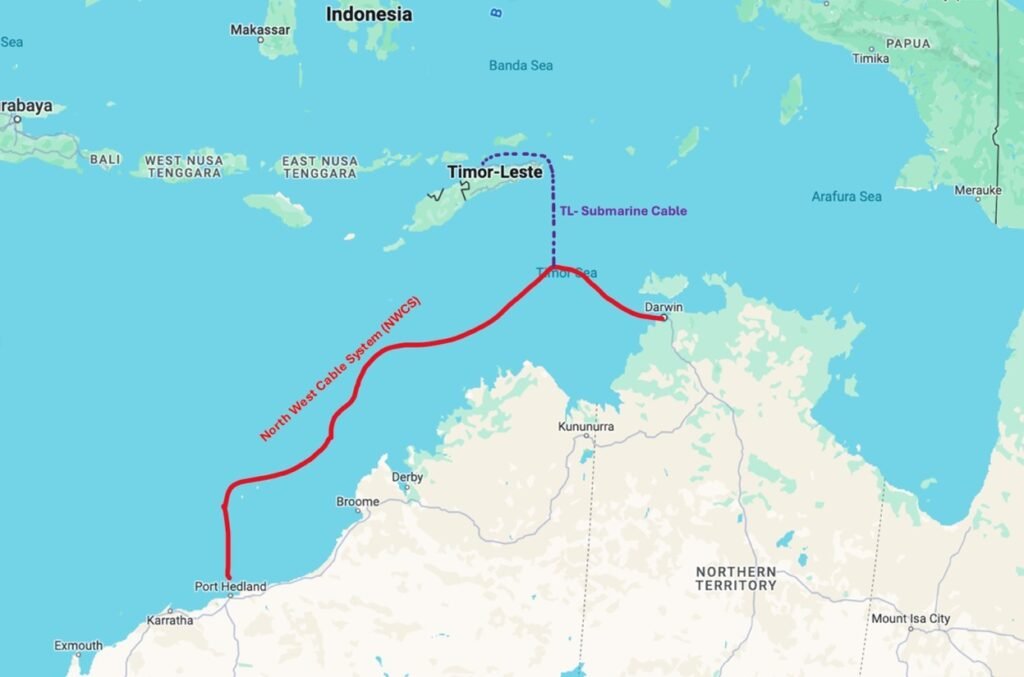
Figure 1. The TL-Submarine cable connection to NWCS
In September 2023, RMS Engineering & Construction and DXN Limited signed an agreement with the Ministry of TransporFigut and Communication to construct and install a Cable Landing Station (CLS) in Bebonuk, Dili. The project was completed in June 2024.
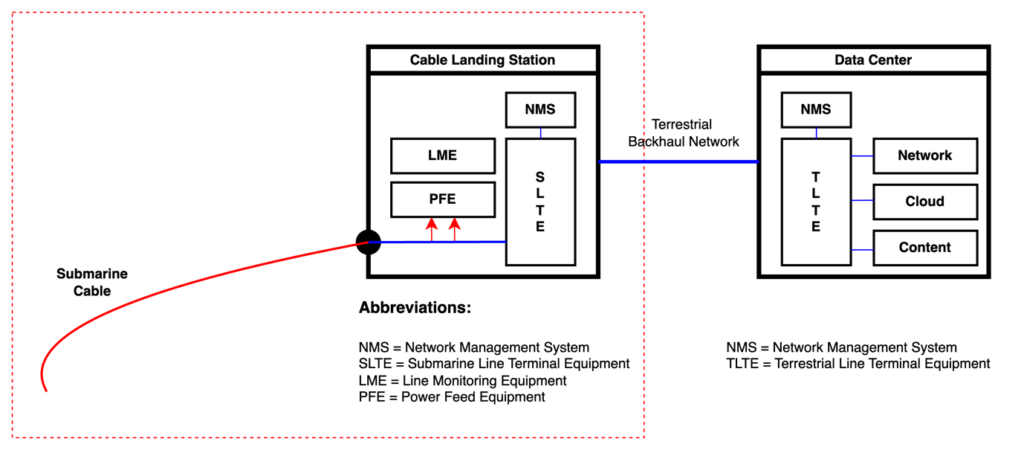
Figure 2. Cable Landing Station (CLS)
A Cable Landing Station (CLS) is a facility located along the coast where submarine communication cables connect to terrestrial networks. When a submarine cable arrives at a CLS, it is linked to terrestrial cables that connect the station to other networks and data centers. CLS facilities are crucial for network reliability and security, they follow strict security protocols to protect the network.
A data center supports Cable Landing Station (CLS) services by providing the infrastructure needed to manage and process the vast amounts of data transmitted through submarine communication cables. It oWers large-scale data storage solutions and computing power for real-time processing. Additionally, it provides content delivery services to distribute data and content globally. However, information about data center supporting CLS in Timor-Leste remains unclear. A few options can be considered, such as building a new data center, allowing the private sector to manage it, or a combination of both approaches.
More Work Awaits…
To deliver fast, reliable, and secure connections for long-term economic prosperity, numerous tasks remain unfinished. The Government, as the project owner, must complete the infrastructure and supporting facilities. This includes not only physical infrastructure but also establishing a management body responsible for operations, maintenance, and business activities to recover the capital investment
The next important phase is to establish the Submarine Cable Operator to manage the facility and conduct business activities. The government must define the legal status and organizational structure, clearly describe internal regulations, and employ competent leadership, knowledgeable managers and skilled personnel. Additionally, this entity needs a solid business model to deliver services, whether through retail (direct services to consumers), wholesale (providing services to other ISPs and operators), or a mix of both retail and wholesale services.
Once the Submarine Cable Operator is established, eWective operational procedures and eWicient functional management must be implemented. A comprehensive business strategy should be developed to achieve targets. Additionally, establishing and executing a regular maintenance plan is necessary to ensure service reliability, and a disruption management plan should be created for rapid recovery from outages. Besides, robust security protocols must be implemented to protect the infrastructure, network, and data.
The Magic Word is “Collaboration”
As part of an interconnected ecosystem, a single initiative needs support from its environment to achieve its objectives. The submarine cable connection, which will bring a significant pipeline of data, requires strong collaboration among stakeholders. This collaboration will maximize the benefits of the investment.
At the top of the list, the ANC, as the regulator, is responsible for setting and enforcing reasonable standards, issuing licenses and permits in a transparent and clear manner, and managing spectrum allocation and monitoring usage to prevent interference. Most
importantly, the ANC ensures fair competition and prevents monopolistic practices through market control.
Meanwhile, telecommunication service providers need to improve their network infrastructure by optimizing channel capacity in the backhaul network. At the last mile, They should consider deploying fiber to homes, using private 5G network for industrial park, and/or Wi-Fi 6E for oWices and public amenities. Boosting network performance through routing redundancy and reliability measures.
Furthermore, the e-government program should leverage cloud services instead of each institution building its own server infrastructure, which is costly in terms of equipment procurement, licensing, installation, specialist requirements, and operational costs. TIC Timor can assist government institutions in developing their information systems, while DNIC can provide network connections without relying on expensive and limited data connection via satellite.
Real case examples, Ministry of Finance has invested heavily in data center infrastructure to streamline processes and secure the Freebalance system. The Civil Service Commission has deployed SIGAP to manage a workforce database of nearly 40,000 employees, in collaboration with over 110 institutions. The Ministry of Education launched the “Escola ba Uma” program during the COVID-19 period, which continues to run and is planned for expansion to include more curricular programs. The Ministry of Health has developed the “Saude na Familia” program to store medical records, proving crucial during the COVID-19 vaccination enrollment. Additionally, the “Liga Inan” program connects pregnant mothers with midwives for health monitoring and control. Many more services across Government institutions can become more eWicient and eWective through digitalization, enabled by the submarine cable. These applications can benefit to various sectors, including agriculture, tourism, commerce, and public services.
For society, they need to develop technological know-how, improve digital literacy and raise awareness of digitalization risks. High-speed data connections can enhance productivity and provide access to high-quality digital content. Utilizing digital tools and services can significantly improve various aspects of life.
Furthermore, one sector that thrives with the presence of high-speed internet is e- commerce. Enhanced e-commerce opportunities will cultivate digital businesses and increase electronic transactions. The central bank needs to maintain close control over developments in this industry.
The responsibilities will fall on all parties involved as a collective eWort. Collaboration among the government, operators, ISPs, and society is essential to achieve the vision of a prosperous Timor-Leste.
End.
Reference
ANC. (2023). About Us. http://anc.tl/about-us/index.html
Andrés Fígoli, A. S., Bill Wall, Glenn Hovermale, Greg Otto, Ian Mclean, Kieran Clark, Kristian Nielsen, John Tibbles, Nicole Starosielski, Philip Pilgrim, and Syeda Humera. (2023). Submarine Telecoms Forum – Industry Report 12). I. Submarine Telecoms Forum. https://subtelforum.com/industry-report/
Australia, P. o. (2022, 17 February 2022). Timor-Leste – Australia Leaders’ Meeting https://parlinfo.aph.gov.au/parlInfo/search/display/display.w3p;query=Id%3A%22media%2Fpre ssrel%2F8426476%22
Cabinet, P. M. (2022). Brief Words of His Excellency the Prime Minister of Timor-Leste, Mr. Taur Matan Ruak relating to the Signing Ceremony of the Contract for the Acquisition and Installation of the Submarine Fiber Optic Cable from Australia to Timor-Leste https://www.pm.gov.tl/en/news/62a9931d038c4d000d670cf0
Comunicacoes, A. N. d. (2019). Relatoriu Annual 2019. http://anc.tl/media/2020/06/Relatoriu- Anual-2019-ANC.pdf
DNIC. (2023). S. E. Ministro Transportes Komunikasaun Visita Data Center DNIC. http://www.mtc.gov.tl/mtc/index.php/content-category-4/227-data-center
Ezhilarasan, E., & Dinakaran, M. (2017). A review on mobile technologies: 3G, 4G and 5G. 2017 second international conference on recent trends and challenges in computational models (ICRTCCM),
Fonseca, A. (2024). Empreza Finaliza ona Infraestrutura CLS ba Kabu Fibra Otika iha Bebonuk. Tatoli. https://tatoli.tl/2024/05/21/empreza-finaliza-ona-infaestrutura-cls-ba-kabu-fibra-otika- iha-bebonuk/
Leste, G. o. T. (2011). Timor-Leste Strategic Development Plan 2011-2030. https://timor- leste.gov.tl/wp-content/uploads/2011/07/Timor-Leste-Strategic-Plan-2011-20301.pdf
Martins, F. (2021). A New Telecommunications Service Provider to Operate in TL. Tatoli. https://en.tatoli.tl/2021/09/16/a-new-telecommunications-service-provider-to-operate-in-tl/20/
Masola, J. (2019). Australia to Support Fibre Optic Cable Lifeline to East Timor. The Sydney Morning Herald. https://www.smh.com.au/world/asia/australia-to-support-fibre-optic-cable- lifeline-to-east-timor-20190829- p52m5u.html?fbclid=IwAR25_TYFhJOwY2rR0KPcYxEA9xAWWN4AckNZ2DpS9IhoBu7dO- tTgX6sj4g
Pereira, E. (2020). CIS Arrest Operator of Telemor Telecommunication and Elite Computer for Allegedly Using a legal Satellite Connection. Tatoli. https://en.tatoli.tl/2020/11/23/cis-arrest- operator-of-telemor-telcomunication-and-elite-computer-for-allegedly-using-a-legal-satellite- connection/23/
Sousa, C. d. (2023). Timor-Leste Gets First Fiber Optic Link to the World. Tatoli. https://en.tatoli.tl/2023/11/20/timor-leste-gets-first-fiber-optic-link-to-the-world/09/
Telecom, T. (2024). 21 Years of History. https://timortelecom.tl/
Telemor. (2024). Together we Stronger / TELEMOR – HETAN DIAK LIU. https://telemor.tl/About/OurCompanyDetail?id=486
Telkomcel. (2021). Company Profile. https://telkomcel.tl/p/company-profile Timor, T. (2024). Role and Responsibility. https://www.tic.gov.tl/en/role-infra


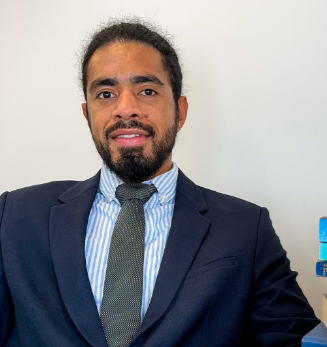

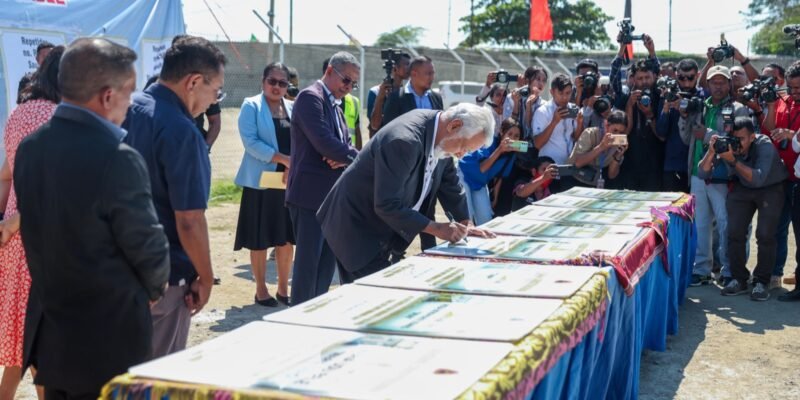
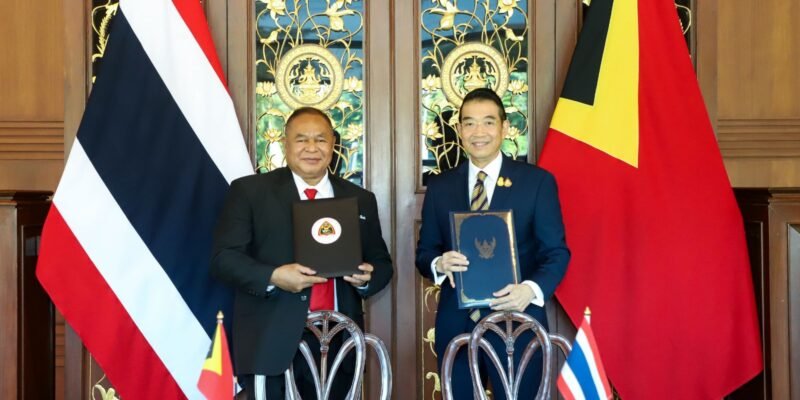
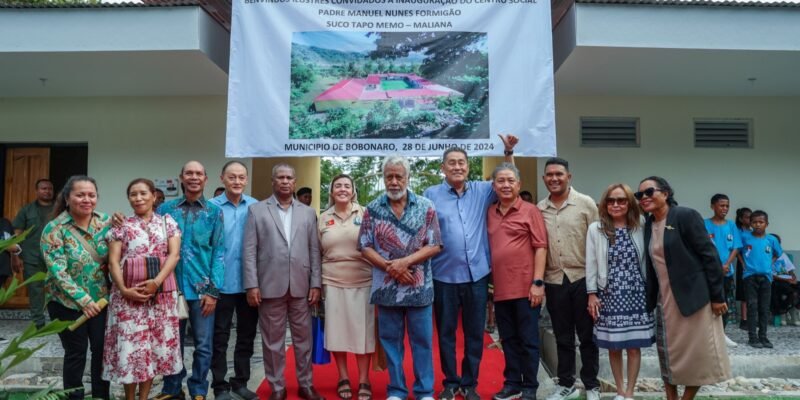
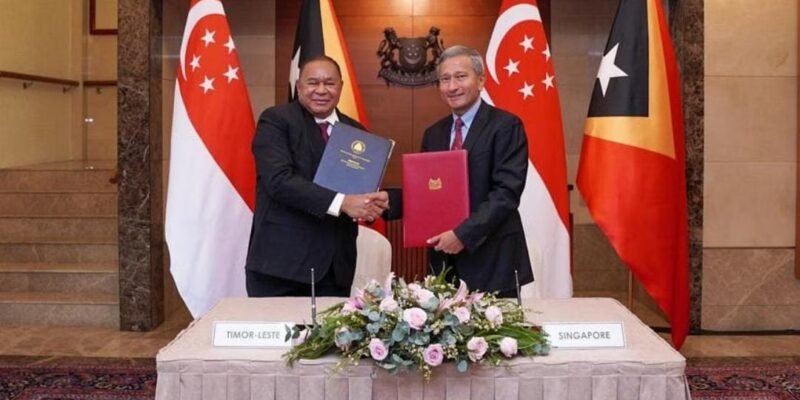

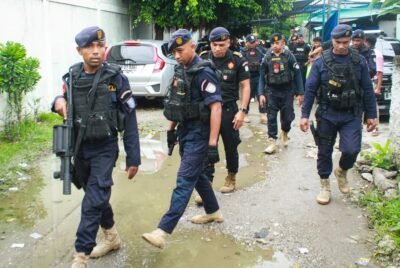

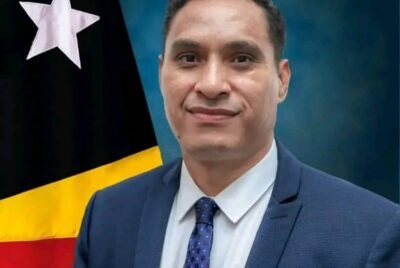
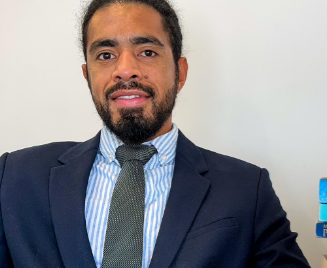
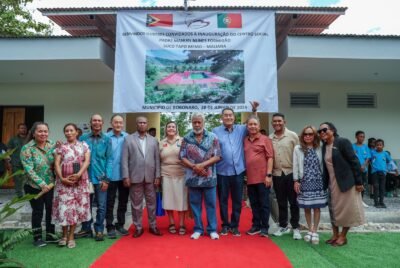
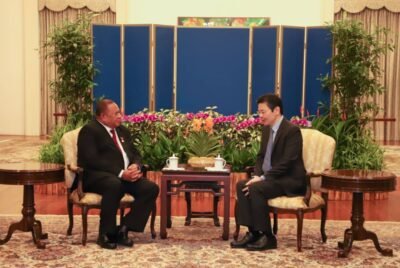
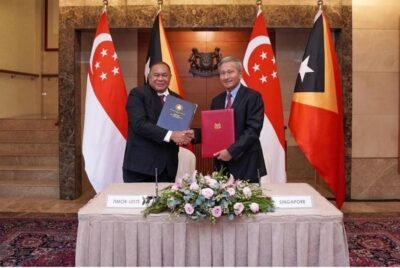
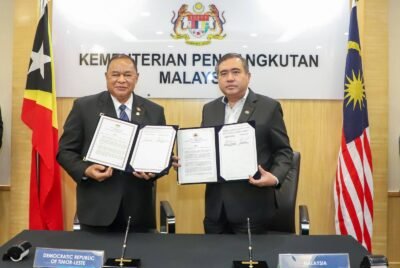
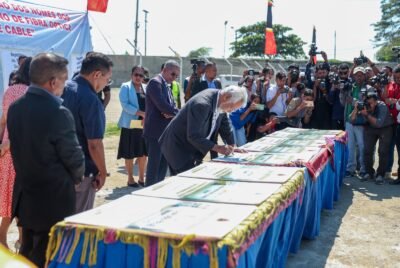
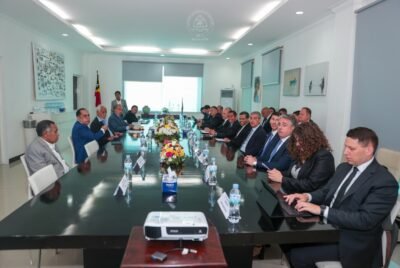









 Users Today : 491
Users Today : 491 Yesterday : 836
Yesterday : 836 This Month : 35429
This Month : 35429 This Year : 159738
This Year : 159738 Total Users : 255963
Total Users : 255963 Views Today : 1126
Views Today : 1126 Total views : 1042924
Total views : 1042924 Who's Online : 10
Who's Online : 10
Komentariu